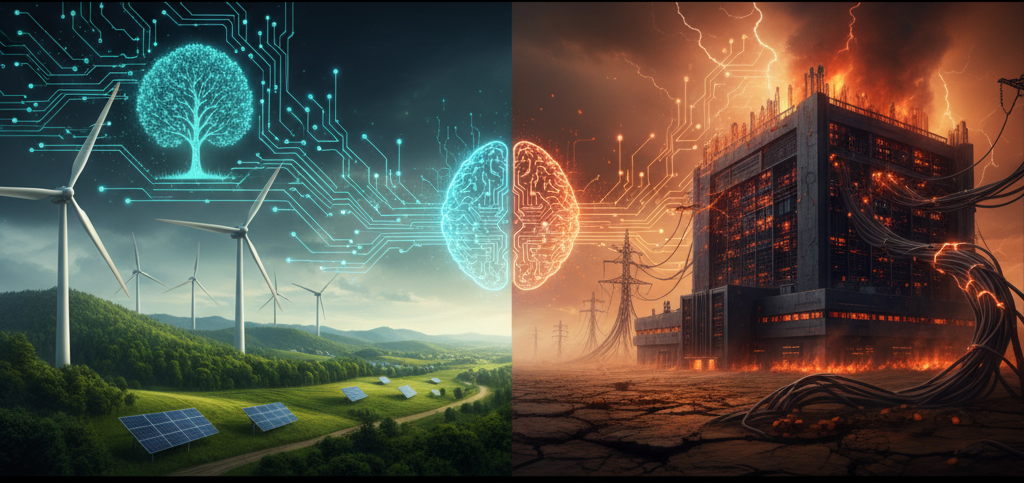Picture this: algorithms predicting wind patterns to maximize renewable energy output, drones scanning rainforests to spot illegal logging in real-time, and smart cities humming with near-zero waste efficiency. Artificial intelligence, in many ways, looks like a superhero in our fight against climate change. But here’s the twist—behind the green cape lies a hidden cost. Training the very AI models that promise to save the planet demands enormous amounts of electricity, water, and hardware. So, the question hangs heavy: is AI truly a climate hero, or is it quietly becoming a villain in disguise?
The Bright Side: AI as an Eco-Warrior
Let’s give credit where it’s due—AI has been a game-changer in environmental protection.
Precision & Efficiency: Data centers and manufacturing plants that once bled energy are now running leaner thanks to AI algorithms fine-tuning every watt of power. It’s like having an invisible conductor orchestrating a symphony of efficiency.
Conservation & Protection: From orbit, AI-powered systems analyze satellite imagery to catch illegal logging before chainsaws fell entire forests, track poaching activity across vast landscapes, and even monitor coral reef bleaching with a vigilance no human team could match.
The Smart Future: AI also makes renewable energy practical. Wind and solar power are notoriously unpredictable, but AI balances their fluctuations on the grid in real time. Beyond energy, researchers are leaning on AI to design new low-carbon materials that could reshape construction and manufacturing.
At its best, AI feels like nature’s ally—an extra brain working tirelessly for sustainability.
The Hidden Cost: AI’s Thirst for Energy and Resources
But here’s the thing: the intelligence fueling these eco-innovations comes at a staggering price.
The Training Bottleneck: Training a single large AI model—say, a system like GPT—can consume as much electricity as thousands of homes do in a year. These models aren’t sipping power; they’re guzzling it, and all that heat has to go somewhere. Cooling them often means water-hungry systems or massive air-conditioning setups that leave behind a hefty carbon footprint.
The Hardware Footprint: Then there’s the machinery itself. GPUs and TPUs, the specialized processors at the heart of AI, require rare materials and energy-intensive manufacturing. Multiply that by the millions of units running in warehouses worldwide, and you start to see the scale. Add in the e-waste problem—hardware that becomes obsolete within a few years—and the sustainability picture grows even murkier.
The “Invisible” Consumption: And let’s be honest, it doesn’t take a supercomputer to feel the impact. Every time you generate an AI image or fire off a complex chatbot query, you’re tapping into those same power-hungry systems. Think of it this way: one sophisticated AI request might use as much energy as streaming hours of video. Multiply that by billions of queries, and the hidden costs become enormous.
So yes, AI may be helping us build greener cities, but at what cost does this intelligence come?
Striking a Balance: The Path to Greener AI
The good news? The story isn’t set in stone. Researchers are pushing for “Green AI”—models designed to deliver more intelligence with less computational muscle. Data centers are increasingly powered by renewable energy, from solar farms to hydroelectric plants. And there’s a growing movement calling for transparency, where tech companies openly report the carbon footprints of their AI operations.
Sustainability doesn’t mean slowing innovation. It means steering it.
Conclusion
AI is a double-edged sword—capable of cutting down emissions or deepening our carbon debt. Its ultimate environmental legacy will be written not by the code itself, but by the choices of those building and regulating it. The question isn’t whether AI will shape our planet’s future—it’s whether we’ll let it do so responsibly.

